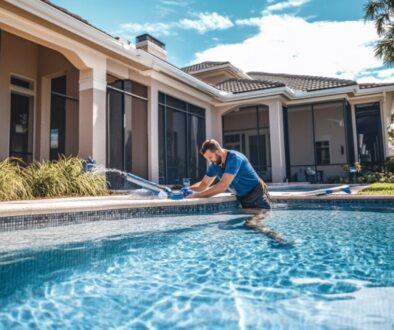Symptoms Of Too Much Chlorine In A Pool: How To Fix It?
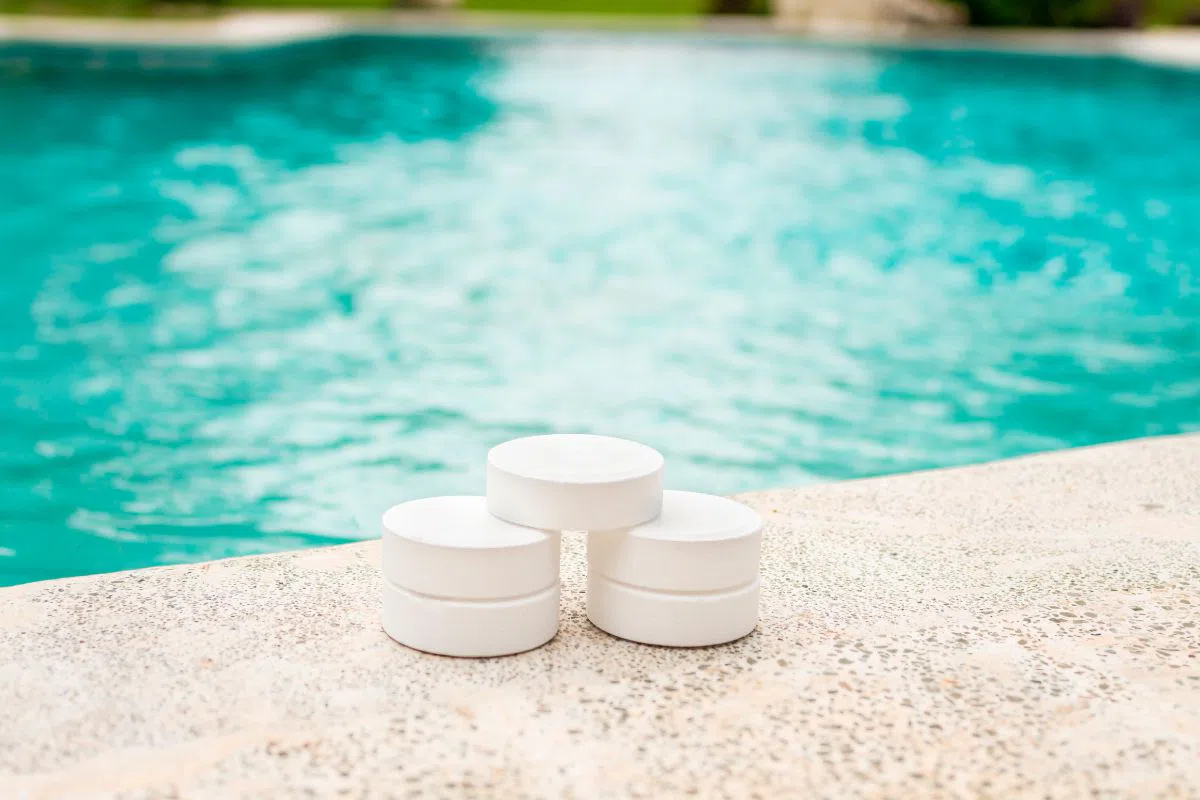
Published April 30, 2024
Chlorine is essential to maintaining the cleanliness and safety of swimming pools. It effectively eliminates harmful bacteria and germs. However, the benefits of chlorine require cautious management to avoid adverse effects on swimmers.
In this article, we’ll examine chlorine in more detail. We’ll also explore the potential symptoms of too much chlorine in a pool and strategies for safe swimming all year round.
What Is Chlorine?
Chlorine is vital in maintaining the safety of pools, hot tubs, and recreational water areas. It effectively eliminates harmful bacteria like E. coli and halts the transmission of diseases. The CDC recommends a minimum chlorine concentration of 1 part per million (ppm) in swimming pools and three ppm in hot tubs.
Nonetheless, once chlorine interacts with organic substances such as urine and sweat, it forms chloramines. These compounds can irritate the eyes, skin, and respiratory system. Sadly, as the chloramine levels increase, the amount of chlorine available to eliminate germs drops. Swimmers may become more susceptible to bacteria that the chlorine is supposed to remove.
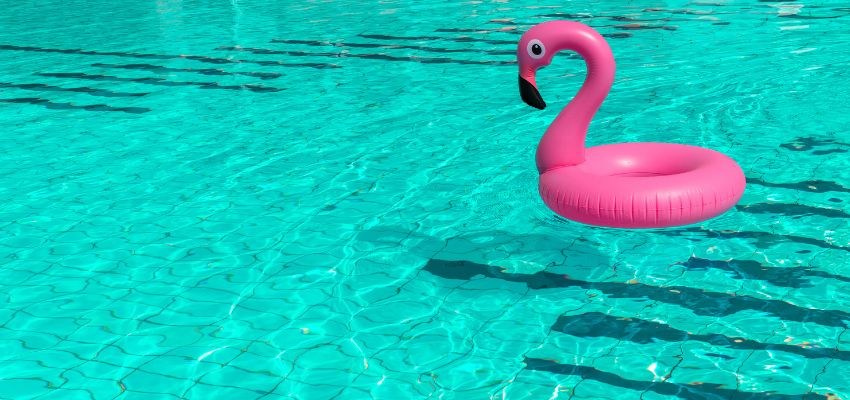
What Are The Symptoms Of Too Much Chlorine In Pool?
Being familiar with the symptoms of too much chlorine in pool is crucial. The objective is to maintain health and safety when using one. Here are the key signs to watch out for:
- Eye irritation and redness. Chlorine can damage the protective tear film that keeps the eyes moist, leading to red, irritated eyes.
- Skin issues. Overexposure can cause dry, itchy skin and may worsen conditions like eczema. Some individuals might also experience a rash.
- Respiratory issues. Inhaling air around chlorinated pools can lead to coughing, wheezing, or asthma-like symptoms. In most cases, this happens in enclosed spaces.
- Hair damage. Chlorine can remove the natural oils from hair, leading to dry, brittle strands and potentially affecting its natural color.
- Nasal irritation. Like its effects on the respiratory system, chlorine can cause irritation and congestion in the nasal passages.
- Chemical burns. In extreme cases, direct contact with concentrated chlorine can cause burns to form on the skin or in the mouth and throat if ingested.
Knowing the side effects of chlorine in swimming pools early and taking appropriate measures is essential. It can prevent more severe health issues associated with chlorine overexposure.
Strategies For Minimizing Side Effects Of Chlorine In Swimming Pools
To mitigate chlorine’s effects on the body, consider these preventative strategies:
- Before swimming. Shower to eliminate excess sweat that can react with chlorine. Using sunscreen can also form a protective layer on your skin.
- During swimming. Wear goggles to shield your eyes, and use a mask or snorkel if necessary.
- After swimming. Quickly change out your swimwear and thoroughly cleanse your body with soap. Apply a moisturizing cream to hydrate the skin.
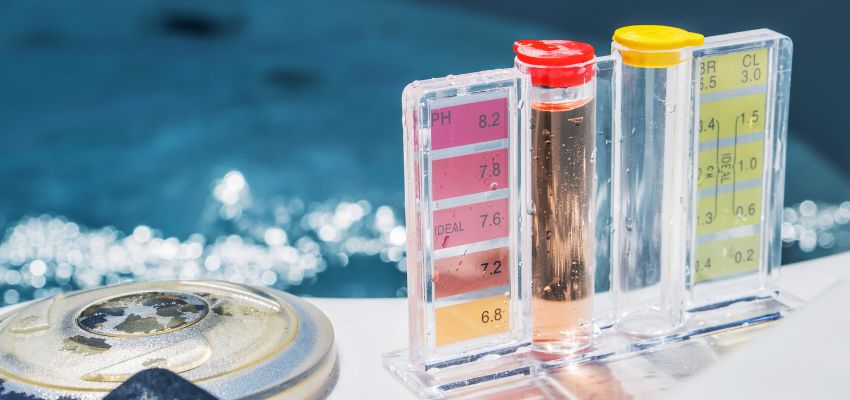
Emergency Responses To Excessive Chlorine Exposure
Excessive chlorine exposure poses significant health risks. Knowing immediate steps for mitigation is crucial for safety.
- Immediate removal. Remove the affected individual from the chlorine source immediately to prevent further exposure.
- Rinse skin and eyes. Thoroughly rinse the skin and eyes with clean water to remove residual chlorine.
- Seek medical attention. For severe symptoms such as difficulty breathing, persistent irritation, or chemical burns, seek professional medical care immediately.
- Ventilation. If the exposure occurred indoors, improve ventilation to disperse chlorine fumes.
- Follow product instructions. In cases of accidental ingestion or direct contact with chlorine products, follow the emergency instructions provided on the product label.
Maintenance Practices For Optimal Chlorine Use
Maintaining optimal chlorine levels in swimming pools is crucial for water safety and swimmer health. Generally, it requires effective maintenance practices. Here are guidelines for maintaining a safe swimming environment:
- Regular testing. Monitor chlorine levels at least twice weekly to ensure they remain within the safe range of 1-3 parts per million (ppm).
- Adjusting levels. Use chlorine reducers or additional water to adjust high chlorine levels back to the safe range.
- Proper storage. Store chlorine products in a cool, dry place. It should be away from direct sunlight and in tightly sealed containers to prevent accidental exposure.
- Use alternatives. Consider using alternative sanitization methods. Some options include UV purification, saltwater systems, or ozone generators—these work by reducing reliance on chemical chlorine.
- Emphasize proper pool use. Encourage showering before entering the pool. Doing so avoids adding organic matter to the water, which can react with chlorine and create harmful by-products.
In case of recurring issues with chlorine management, consult Boca Raton pool cleaning and maintenance professionals for expert advice.
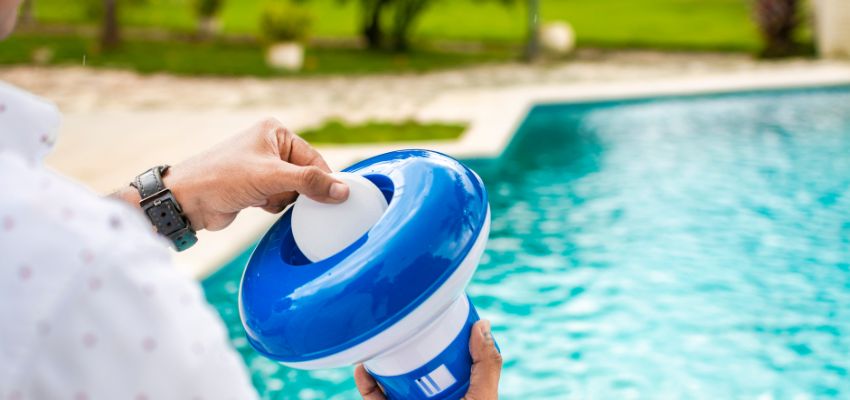
Frequently Asked Questions About Pool Chlorine
How can I quickly reduce the chlorine levels in my pool?
To efficiently lower chlorine levels, consider partially draining and refilling your pool with fresh water, applying a chlorine-neutralizing agent, or letting sunlight naturally diminish the chlorine. Always adhere to the manufacturer’s guidelines when handling chemicals.
How often should I test my pool’s chlorine levels?
It’s recommended to check your pool’s chlorine levels weekly under standard conditions. Nevertheless, tests should be conducted more frequently during heavy use or following substantial weather events, such as rainstorms, to maintain ideal chlorine levels.
What are the ideal chlorine levels for a swimming pool?
The optimal chlorine concentration for a swimming pool is within 1.0 to 3.0 parts per million (ppm). Maintaining chlorine levels within this specified range is crucial for preserving the pool’s cleanliness and safety while minimizing the risk of irritation for swimmers.
Are there alternatives to chlorine for keeping my pool clean?
Indeed, many options exist beyond chlorine for pool sanitation, such as saltwater systems, bromine, ozone generators, and ultraviolet (UV) light systems. Each option offers unique benefits and comes with specific maintenance needs. Therefore, it’s advisable to consult a pool expert before switching. Doing so ensures it aligns with your pool’s requirements and your preferences.
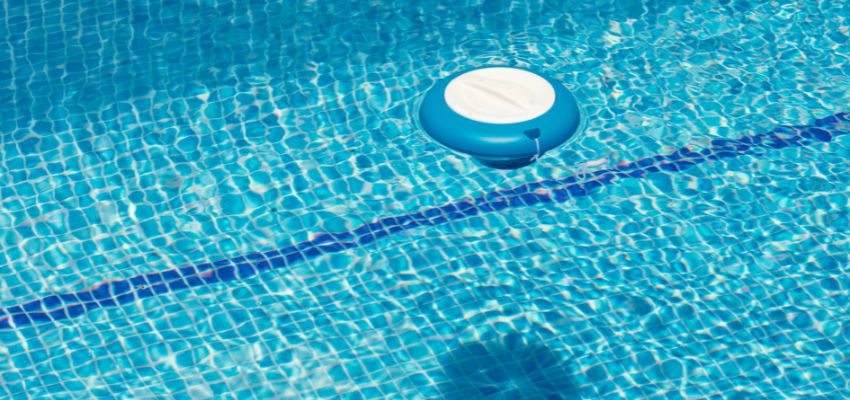
Maintaining A Safe And Enjoyable Swimming Environment
By following these guidelines and best practices, swimmers and pool owners can harness the benefits of chlorine for pool hygiene and safety while minimizing its potential health risks. Gaining knowledge about the symptoms of too much chlorine in pool and taking proactive steps are crucial for ensuring a healthier and more enjoyable swimming experience.
Hire Boca’s Favorite Pool Builders
Excel Pool and Patio Solutions is your trustworthy provider of pool services in Boca Raton. We are experts in pool and patio remodeling and can handle your resurfacing needs as well. Our technicians are vetted and trained for your guaranteed satisfaction. Get to know us by browsing our website or reaching out to us with any questions.
Contact our team today to request a free estimate for pool construction, maintenance, repairs and more.
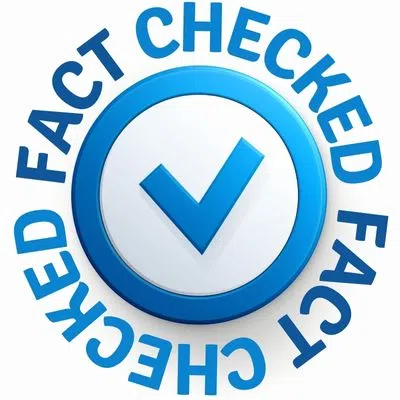
Fact Checked By Experts
This is original content and has been diligently fact checked by our internal team of experts. Discover more about the rigorous editorial standards we uphold for our website here.

About The Author
Hello! I am Corinne, a graduate of Riverside College. My career has evolved into focusing on writing, where I deliver high-quality and meticulously researched content. I have a proven track record of developing helpful articles that engage a wide variety of readers.


